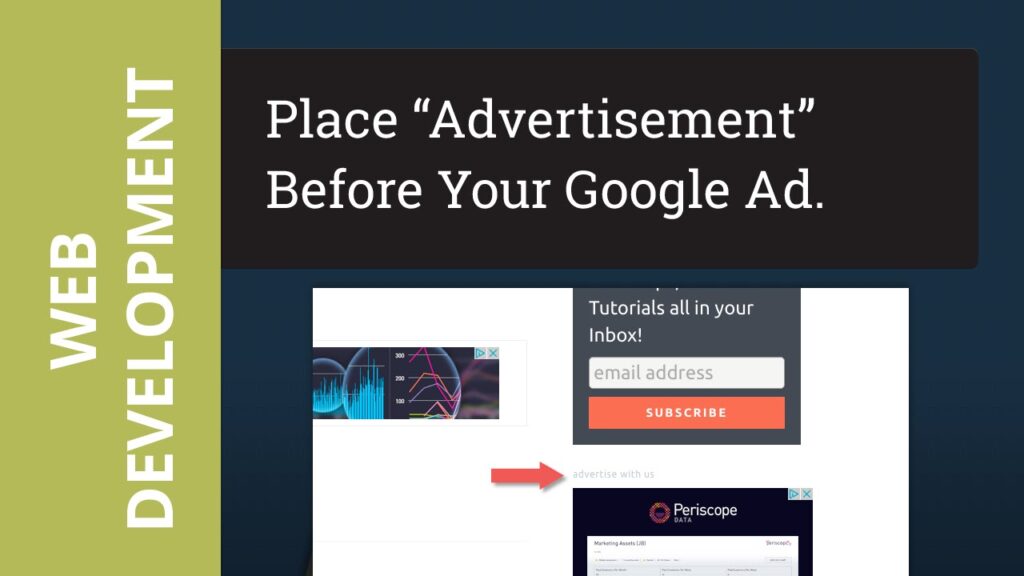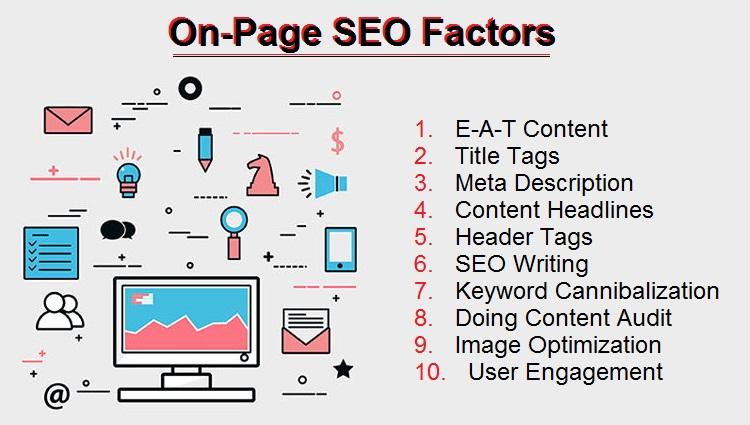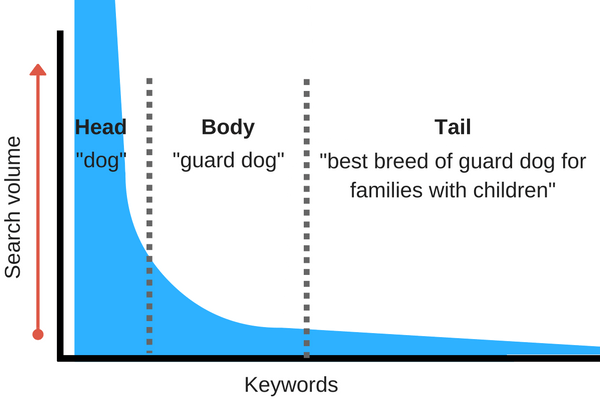
Whatever your business, you can use Google Ads to grow your website traffic and generate leads for your company. Take a look at our top tips to help you generate more leads with Google Ads:
Perfect your landing page– Your landing page is the first page of your website that visitors see after clicking your ad. If you’re running a lead-generating campaign, this page should allow your visitors to take the action that you want. Since you’re asking people to share somewhat personal information, the design and content of your site matters. Remember, if your site doesn’t come across as trustworthy and professional, your visitors are less likely to submit their information.
Enhance your campaign- By fine-tuning your ads and landing pages, you can ensure that the right people are clicking on your ads and converting as leads.
There are many ways you can increase traffic on your website, and in today’s post, we’re going to look at some of them, including several ways to boost site traffic.
Advertise

Paid search, social media advertising and display advertising (try our Smart Ads Creator!) are all excellent ways of attracting visitors, building your brand and getting your site in front of people. Adjust your paid strategies to suit your goals. If you’re hoping that more traffic to your site will also result in more sales, you’ll need to target high commercial intent keywords as part of your paid search strategies. Yes, competition for these search terms can be fierce (and expensive), but the payoffs can be worth it.
Use Social Media Channels

It’s not enough to produce great content and hope that people find it – you have to be proactive. One of the best ways to increase traffic to your website is to use social media channels to promote your content. Twitter is ideal for short, snappy (and tempting) links, whereas Google+ promotion can help your site show up in personalised search results and seems especially effective in B2B niches. If you’re a B2C product company, you might find great traction with image-heavy social sites like Pinterest and Instagram.
Quality Writing

There is no magic formula for content marketing success, despite what some would have you believe. For this reason, vary the length and format of your content to make it as appealing as possible to different kinds of readers. Intersperse shorter, news-based blog posts with long-form content as well as video, infographics and data-driven pieces for maximum impact.
Attractive Headlines

Do you want your blog to gain more traffic, and higher conversion rates? Then, you should learn about the secret of the world’s highest paid bloggers. They use these catchy headlines & attention grabbing blog title templates.
Headlines are one of the most important parts of your content. Without a compelling headline, even the most comprehensive blog post will go unread. Master the art of headline writing.
On-Page SEO

Optimising your content for search engines is still a valuable and worthwhile practice. Are you making the most of image alt text? Are you creating internal links to new content? What about meta descriptions? Optimising for on-page SEO doesn’t have to kill your time, and it could help boost traffic.
Search engine optimisation is the process of improving the quality and quantity of website traffic to a website or a web page from search engines. SEO targets unpaid traffic rather than direct traffic or paid traffic.
Use Long-Tail Keywords

Long-tail keywords are longer and more specific keyword phrases that visitors are more likely to use when they’re closer to a point-of-purchase or when they’re using voice search. They’re a little bit counter-intuitive, at first, but they can be hugely valuable if you know how to use them.
Got your high-intent keyword and popular keyword bases covered? Then it’s time to target long-tail keywords, too. Long-tail keywords account for a majority of web searches, meaning that if you’re not targeting them as part of your paid search or SEO efforts, you’re missing out.
Post Content to LinkedIn
LinkedIn has become much more than a means of finding another job. The world’s largest professional social network is now a valuable publishing platform in its own right, which means you should be posting content to LinkedIn on a regular basis. Doing so can boost traffic to your site, as well as increase your profile within your industry – especially if you have a moderate to large following.
Implement Schema Microdata

Schema markup is code (semantic vocabulary) that you place on your website to help the search engines return more informative results for users. If you’ve ever used rich snippets, you’ll understand exactly what schema markup is all about. Implementing schema (or another micro-data format) won’t necessarily increase traffic to your website on its own, but it will make it easier for search engine bots to find and index your pages. Another benefit of using schema for SEO is that it can result in better rich site snippets, which can improve click-through rates.
Link Internally
The strength of your link profile isn’t solely determined by how many sites link back to you – it can also be affected by your internal linking structure. When creating and publishing content, be sure to keep an eye out for opportunities for internal links. This not only helps with SEO, but also results in a better, more useful experience for the user – the cornerstone of increasing traffic to your website.
Interview Industry Thought Leaders
Think interviews are only for the big leaguers? You’d be amazed how many people will be willing to talk to you if you just ask them. Send out emails requesting an interview to thought leaders in your industry, and publish the interviews on your blog. Not only will the name recognition boost your credibility and increase traffic to your website, the interviewee will probably share the content too, further expanding its reach.
Email Marketing
So many businesses are focused on attracting new customers through content marketing that they forget about more traditional methods. Email marketing can be a powerful tool, and even a moderately successful email blast can result in a significant uptick in traffic. Just be careful not to bombard people with relentless emails about every single update in your business. Also, don’t overlook the power of word-of-mouth marketing, especially from people who are already enjoying your products or services. A friendly email reminder about a new service or product can help you boost your traffic, too.
Make Your Site Responsive
The days when internet browsing was done exclusively on desktop PCs are long gone. Today, more people than ever before are using mobile devices to access the web, and if you force your visitors to pinch and scroll their way around your site, you’re basically telling them to go elsewhere. Even if you have a basic website, you still need to ensure that it is accessible and comfortably viewable across a range of devices, including smaller smartphones.
Make Your Site Fast
Ever found yourself waiting thirty seconds for a webpage to load? Me neither. If your site takes forever to load, your bounce rate will be sky high. Make sure that your pages are as technically optimised as possible, including image file sizes, page structure and the functionality of third-party plugins. The faster site loads, the better.
Foster a Sense of Community
People want to speak their minds and weigh in on subjects they feel passionately about, so building a community into your site is a great way to start a conversation and increase traffic to your website. Implement a robust commenting system through third-party solutions such as Facebook comments or Disqus, or create a dedicated forum where visitors can ask questions. Don’t forget to manage your community to ensure that minimum standards of decorum are met, however.
Comment Sections
You probably visit at least a few sites that are relevant to your business on a regular basis, so why not join the conversation? Commenting doesn’t necessarily provide an immediate boost to referral traffic right away, but making a name for yourself by providing insightful, thought-provoking comments on industry blogs and sites is a great way to get your name out there – which can subsequently result in driving more traffic to your own site. Just remember that, as with guest posting, quality and relevance are key – you should be engaging with other people in your niche, not dropping spam links on unrelated websites.
Examine Your Analytics Data
Google Analytics is an invaluable source of data on just about every conceivable aspect of your site, from your most popular pages to visitor demographics. Keep a close eye on your Analytics data, and use this information to inform your promotional and content strategies. Pay attention to what posts and pages are proving the most popular. Inspect visitor data to see how, where and when your site traffic is coming from.
Get Active on Social Media
It’s not enough to just share content through social channels – you need to actively participate in the community, too. Got a Twitter account? Then join in group discussions with relevant hashtags. Is your audience leaving comments on your Facebook posts? Answer questions and engage with your readers. Nothing turns people off quicker than using social media as a broadcast channel – use social media as it was intended and actually interact with your fans.
Incorporate Video into Your Content Strategy
Text-based content is all well and good, but video can be a valuable asset in both attracting new visitors and making your site more engaging. Data shows that information retention is significantly higher for visual material than it is for text, meaning that video marketing is an excellent way to grab – and hold – your audience’s attention, and boost traffic to your website at the same time.
Research the Competition
If you haven’t used software like BuzzSumo to check out what your competitors are up to, you’re at a huge disadvantage. These services aggregate the social performance of specific sites and content to provide you with an at-a-glance view of what topics are resonating with readers and, most importantly, making the rounds on social media. Find out what people are reading (and talking about), and emulate that kind of content to bring traffic to your website.
Host Webinars
People love to learn, and webinars are an excellent way to impart your wisdom to your eagerly waiting audience. Combined with an effective social promotion campaign, webinars are a great way to increase traffic to your website. Send out an email a week or so ahead of time, as well as a “last chance to register” reminder the day before the webinar. Make sure to archive the presentation for later viewing, and promote your webinars widely through social media. If you’re wondering how to do a webinar, click the link for some tips.
Attend Conferences
Whatever industry you’re in, chances are there are at least one or two major conventions and conferences that are relevant to your business. Attending these events is a good idea – speaking at them is even better. Even a halfway decent speaking engagement is an excellent way to establish yourself as a thought leader in your industry and gain significant exposure for your site.
Well, this is just about today’s post. If you’ve got your own tips for increasing traffic to your website, I’d love to hear from you.
Financial and Business expert having 30+ Years of vast experience in running successful businesses and managing finance.





